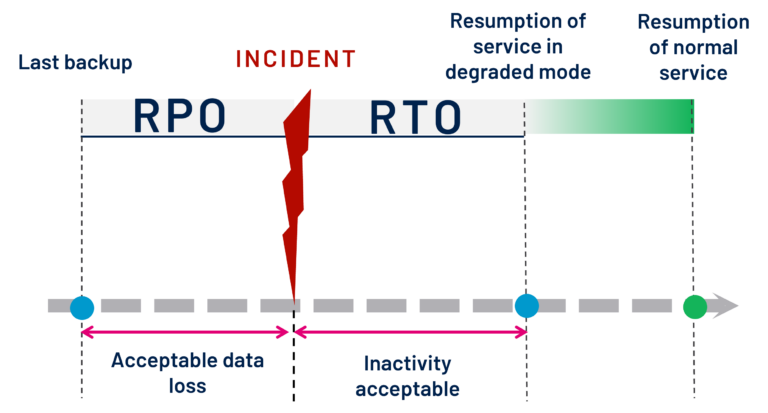RPO : Recovery Point Objective

RPO : Recovery Point Objective
The RPO (Recovery Point Objective) is the time interval representing the maximum acceptable amount of data loss for a business. In other words, the RPO is how fresh the data needs to be when restored after an interruption. This concept determines the objectives and strategy for backup.
For example: A company has defined a maximum RPO of 24 hours. One of its servers fails at 10 AM. The company will restore the last backup, which was made at 6 PM the previous day. Therefore, the data freshness will be 16 hours, meeting the objective.
The RPO is determined based on a risk analysis and a business impact assessment. This should be done before developing the DRP (Disaster Recovery Plan) project.
An RPO of 24 hours may be sufficient for servers with low data volumes. In this case, a single backup at the end of the day would be performed. For machines where the volume of changed data is significant, such as databases (SQL), a shorter RPO may be necessary. In this case, more frequent backups are carried out (usually in block mode).
In a BCP (Business Continuity Plan), the RPO is a few seconds. The replication is called synchronous and ensures a perfect match between the source and target data. Although synchronous replication seems like the best solution at first glance, it is very costly and requires a significant internet bandwidth.
